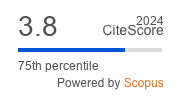Article | Open Access
Gap Analysis Between the Level of Heat Wave Adaptation Policy and Heat Wave Effects in South Korean Municipalities
| Views: | 1422 | | | Downloads: | 1057 |
Abstract: This study aims to analyze the gap between the level of heat wave adaptation policies and heat wave effects in South Korean municipalities. First, the types of industries in municipalities were classified using factor analysis and cluster analysis. Second, the level of heat wave adaptation policy in the municipalities was assessed using a fuzzy analytic hierarchy process analysis. Third, the gap between the level of heat wave adaptation policy and the heat wave effect was analyzed. The results show that the heat wave adaptation policies were established in accordance with the heat wave effects to at least some degree. However, closer to the long-term future (2095), the policies have not sufficiently matched the level of heat wave effects. The proportion of municipalities with insufficient levels of heat wave adaptation policies against the heat wave effects was higher among urban-type municipalities. The analysis results suggest two policy implications. First, the heat wave adaptation policies of municipalities should be established through continuous feedback on the predictions of future heat wave effects. Second, urban-type municipalities should strengthen their planning authority and competence by securing a professional workforce and budgets for the establishment of heat wave adaptation policies.
Keywords: adaptation policy; climate change; gap analysis; heat wave; local government; municipal policies; South Korea
Published:
© Tae Ho Kim, Chang Sug Park, Sang-hyeok Lee, Jung Eun Kang. This is an open access article distributed under the terms of the Creative Commons Attribution 4.0 license (http://creativecommons.org/licenses/by/4.0), which permits any use, distribution, and reproduction of the work without further permission provided the original author(s) and source are credited.


